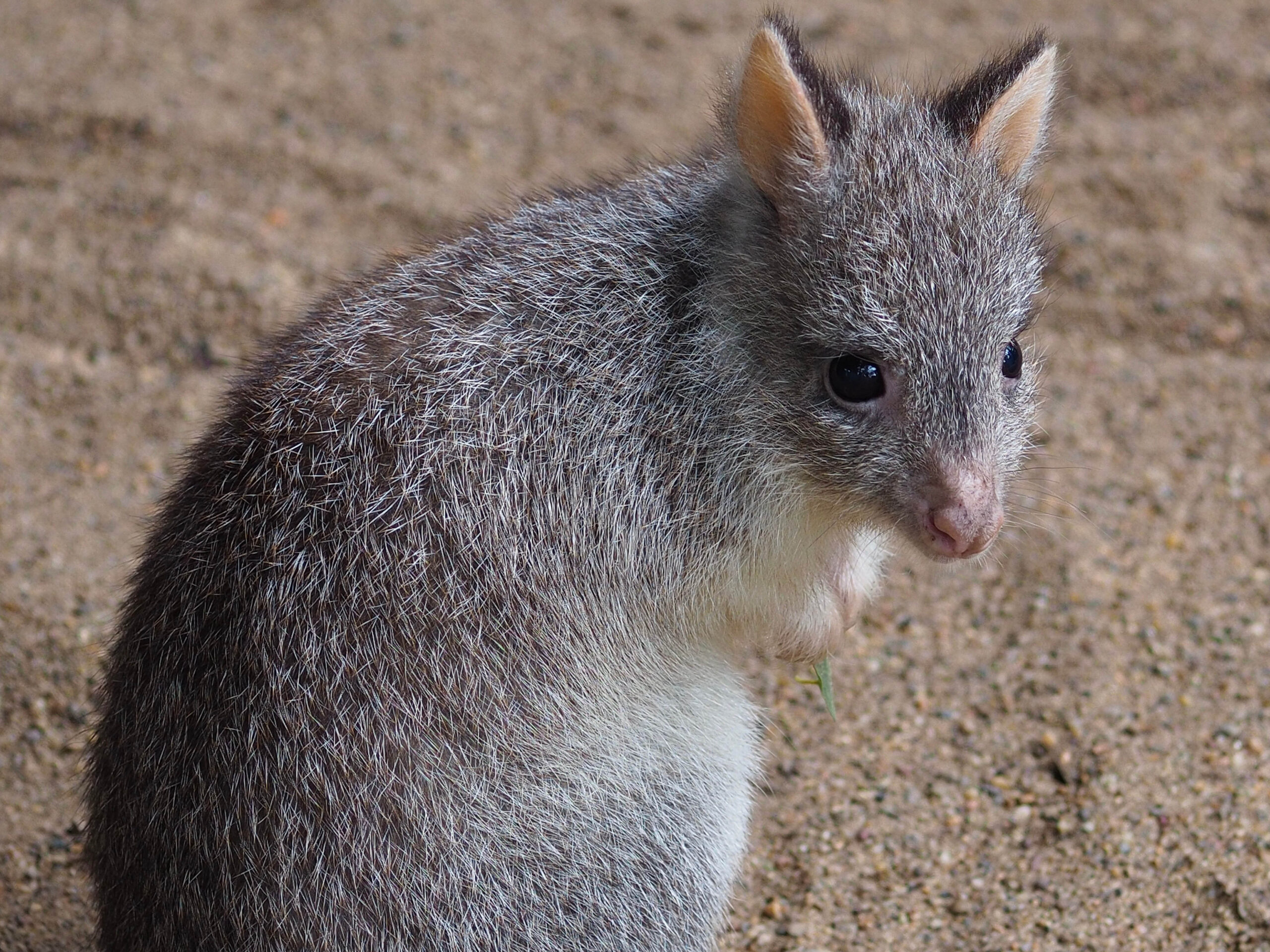With its soft russet fur and shy, nocturnal habits, the Rufous Bettong (Aepyprymnus rufescens) is a subtle but significant contributor to Australia’s ecological mosaic. Sometimes called the “rat-kangaroo,” this compact marsupial is more than its nickname implies. It is an expert digger, a seed disperser, and a crucial agent in maintaining soil health. Found mostly in the grassy woodlands and open forests of eastern Australia, the Rufous Bettong’s gentle presence belies its ecological importance – and the vulnerability it faces in a changing landscape.
Identification
The Rufous Bettong is the largest of the potoroids, with a head-body length of around 30-40 cm and a tail of similar length. Adults typically weigh between 2.5 and 3.5 kilograms. Its dense, soft fur is greyish on the upper body with a warm rufous tinge, especially on the rump and flanks. The underparts are paler. Its muzzle is relatively short, with large eyes and ears suited to nocturnal life. The tail is strong, partly prehensile, and often used to carry nesting material, curled into a loop.
Habitat and Distribution
This species occurs across eastern and south-eastern Queensland and into northern New South Wales. It prefers grassy open woodlands, particularly those dominated by Eucalyptus and Corymbia species with a well-developed ground layer of grasses and herbs. Rufous Bettongs construct nests from grass and other plant material in shallow depressions or under low shrubs and logs, which they line and maintain regularly. These nests provide critical shelter from predators and temperature extremes.
Ecological Role
The Rufous Bettong plays an essential role in soil health and ecosystem dynamics. As a mycophagist, it consumes underground fungi (truffles), dispersing their spores through its droppings and promoting symbiotic relationships between fungi and native plants. Its foraging behaviour involves extensive digging for tubers, roots, and fungi, turning over leaf litter and soil in the process. This bioturbation enhances soil aeration, promotes nutrient cycling, and contributes to the regeneration of native vegetation.
Behaviour and Reproduction
Solitary and strictly nocturnal, the Rufous Bettong emerges at dusk to forage. It is highly mobile within its home range but generally returns to the same nesting site each day. The species is polyoestrous, capable of breeding year-round when conditions are favourable. Females usually give birth to a single young, which develops in the pouch for approximately 100 days. Post-pouch young remain in the nest or accompany the mother during foraging excursions until fully independent.
Conservation Status
In Queensland, Aepyprymnus rufescens is currently listed as Least Concern under the Nature Conservation Act 1992. While still relatively widespread in parts of Queensland, its distribution has contracted significantly since European settlement, and local declines have been recorded in areas where habitat quality has diminished.
Threats
The primary threats to the Rufous Bettong include habitat loss from clearing for agriculture, urban development, and inappropriate fire regimes that alter ground cover and food availability. Predation by introduced species such as foxes and feral cats is a major concern, particularly in fragmented habitats where escape cover is limited. Livestock grazing may also compact soils and reduce the availability of important fungal and tuberous food resources. As with many ground-dwelling marsupials, increased fragmentation leads to population isolation and genetic decline.
Conservation Efforts
Conservation strategies for the Rufous Bettong focus on the protection and restoration of grassy woodland habitats, especially those with high ground cover diversity and an intact soil structure. Predator control programs targeting foxes and feral cats are essential for population stability. Some successful reintroductions and fenced sanctuary populations have been established in areas from which the species was previously extirpated. Research into the species’ diet, reproductive ecology, and landscape connectivity requirements continues to inform broader biodiversity conservation efforts.
Final Thoughts
The Rufous Bettong is a quiet achiever in the Australian bush – a delicate ecosystem engineer that helps maintain the integrity of the very habitats it depends on. Its presence reflects the health of grassy woodland systems and the continued survival of species with specific and finely balanced ecological needs. To conserve Aepyprymnus rufescens is to invest in soil health, ecosystem function, and the often-overlooked subtleties of Australia’s natural heritage.
Fauna Resources specialises in the safe handling of a range of different fauna species, through safe, effective and ethical fauna solutions. By providing dedicated fauna services, through passionate fauna spotter catchers and fauna specialists, we can support the unique terrestrial ecosystems and rich biodiversity Australia has to offer.
For more information about our specialist fauna services contact Fauna Resources today.

